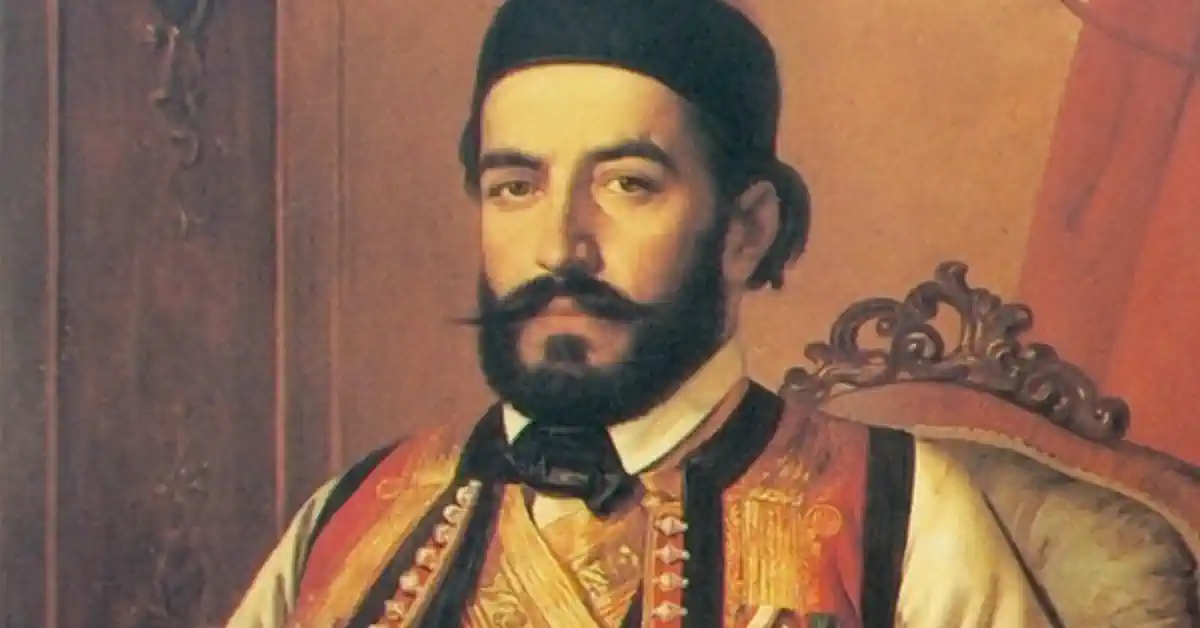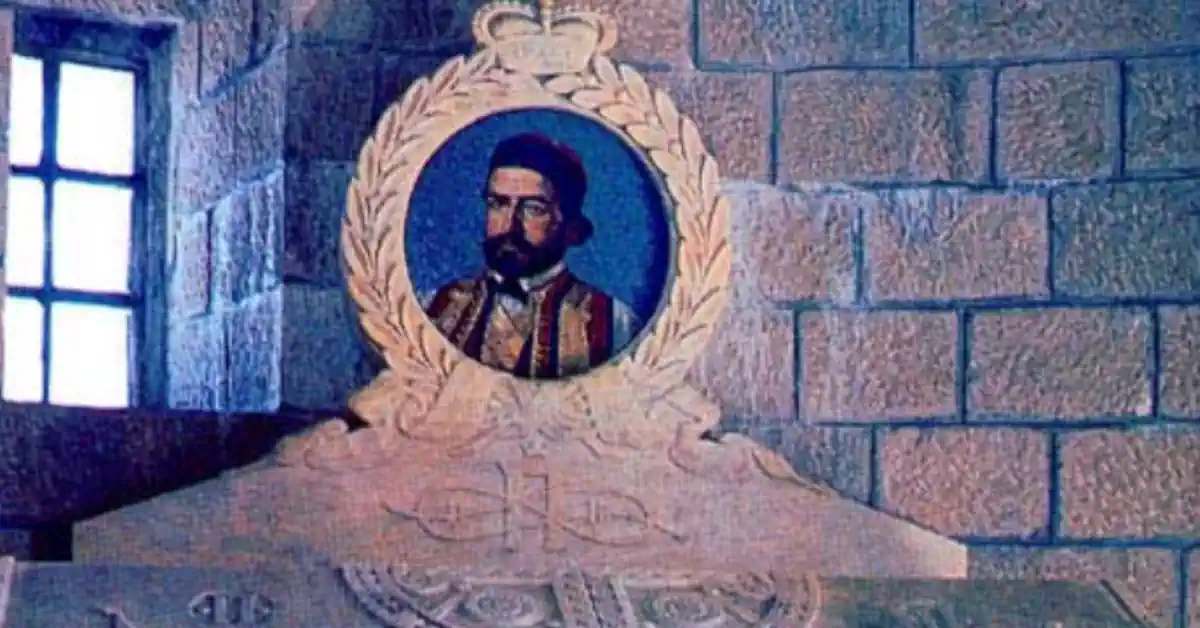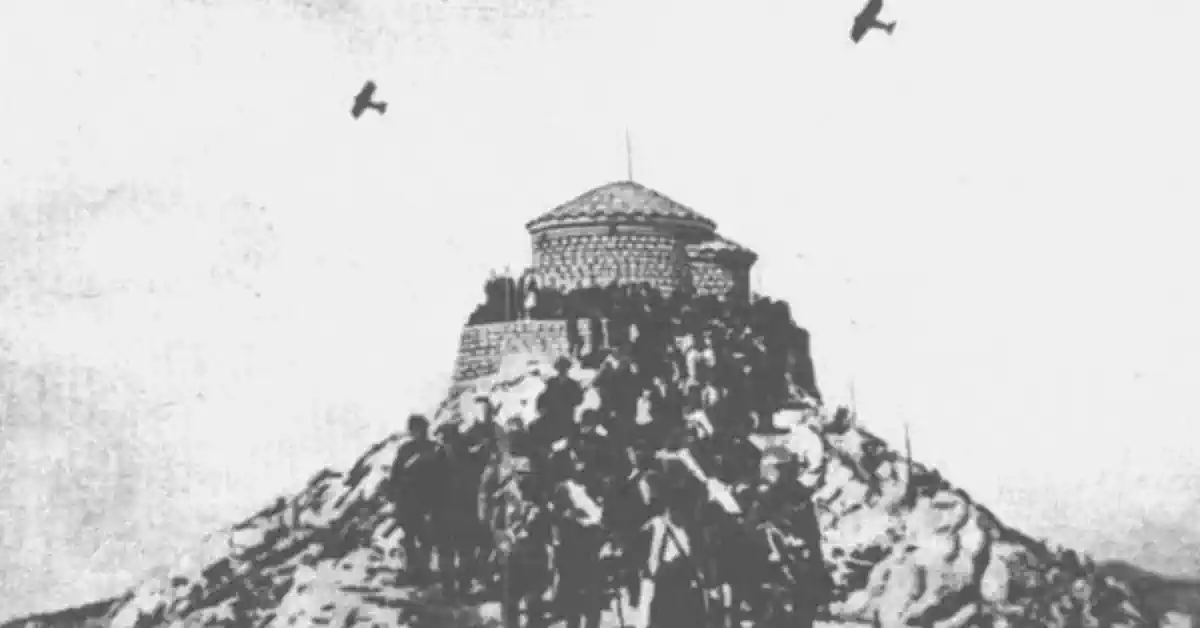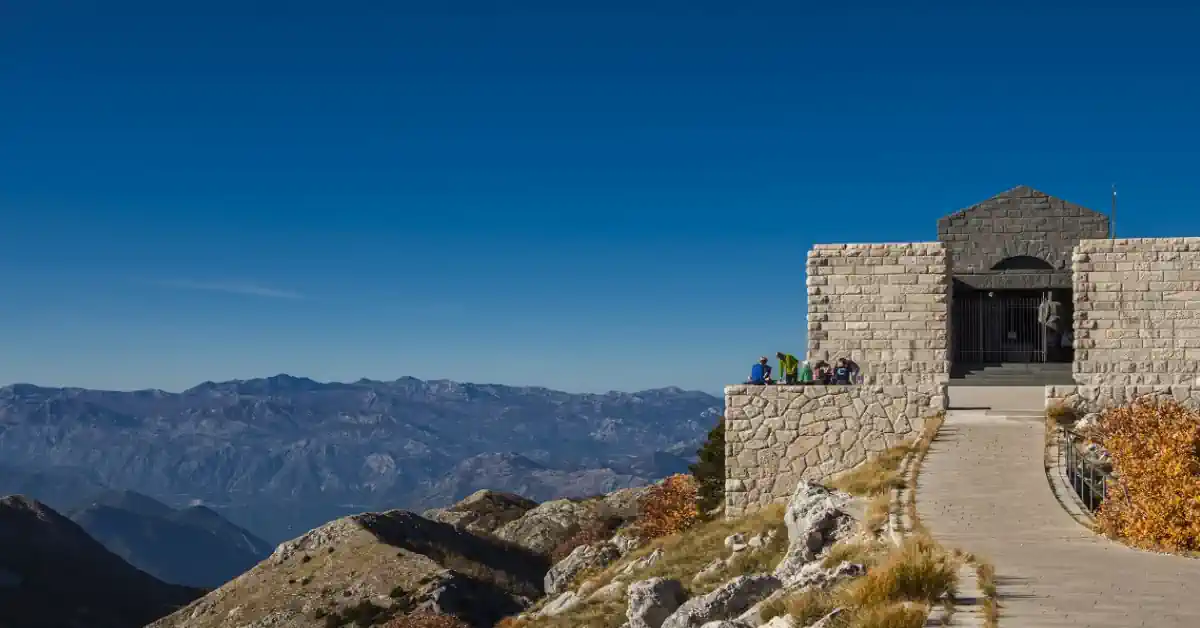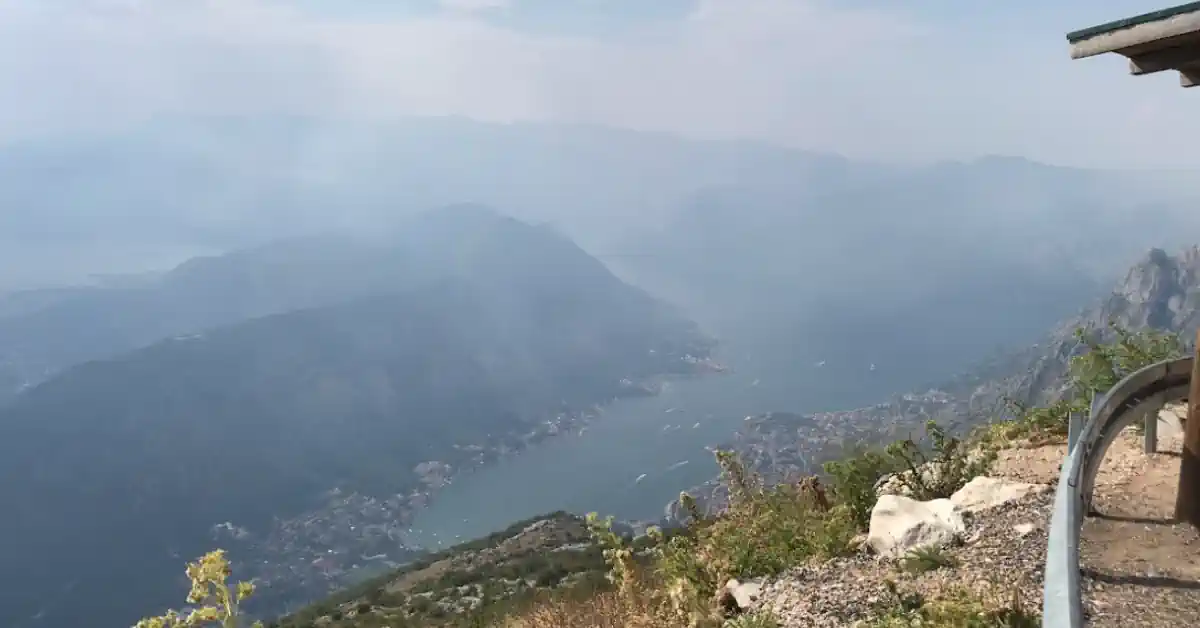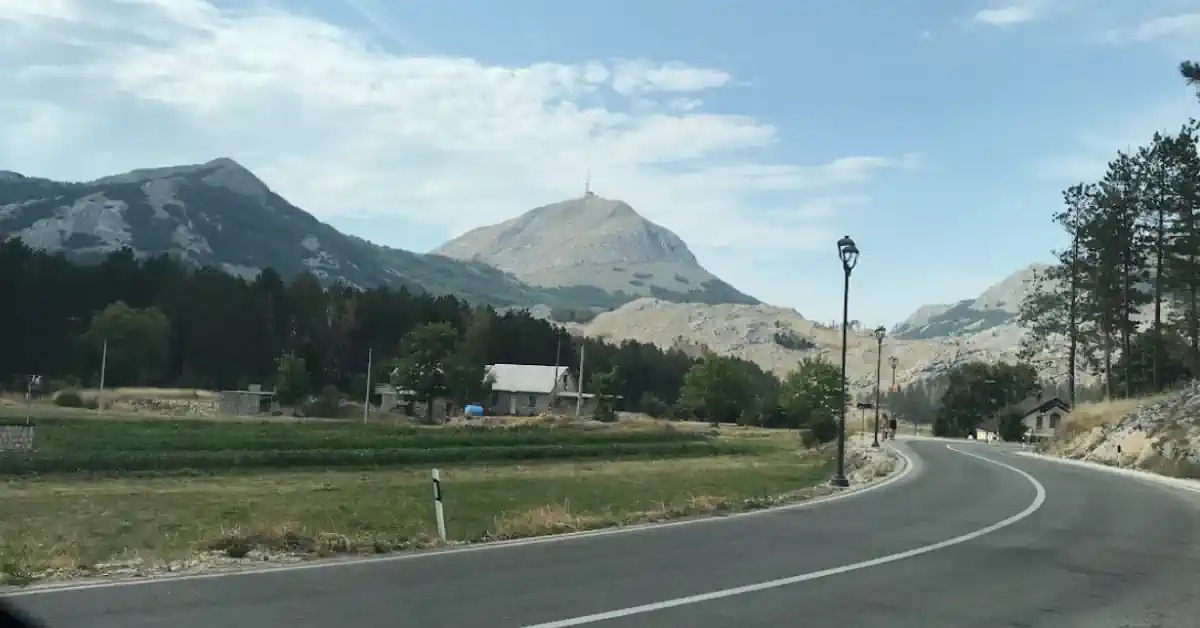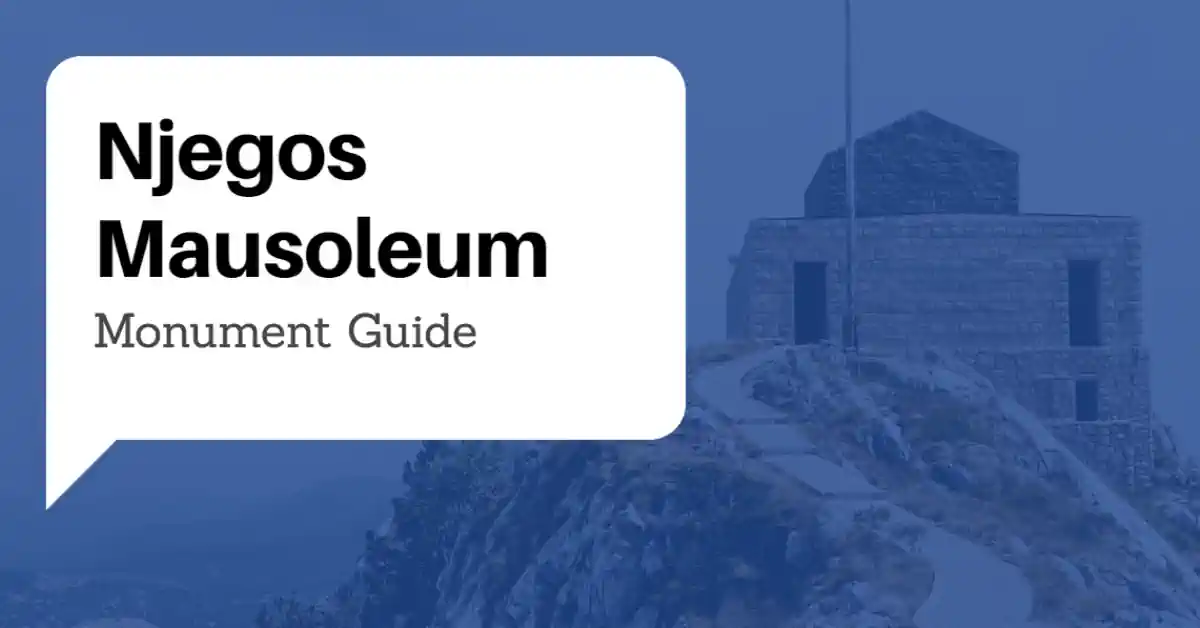
Table of Contents
ToggleNjegos Mausoleum
461 steps. This is how many steps await you on your trip to visit the eternal resting place of Petar II Petrovic Njegos (or simply: Njegos), the former ruler, poet, and Montenegro’s most acclaimed person.
source: Wikipedia
Njegos’ remains rest at a height of 1650 meters above sea level, making this the highest mausoleum in the world. The Njegos Mausoleum is a must-visit, not only for the structure itself but especially for the breathtaking nature surrounding it and the beautiful view from the observation deck.
History of the Mausoleum
Petar II was only 37 years old when he died in the year 1851. He must have guessed that his life would be rather short. Just before his death, he expressed the wish to be buried atop Mount Lovcen in a small church that he would design himself and dedicate to his predecessor Petar I.
source: Njegos Org
Info: At first, Njegos Njegos was interred at the Cetinje Monastery only to be later in 1855 transferred to his chapel.
But things seldom go according to plan, especially in the tumultuous Balkans. During the Austro-Hungarian occupation of Montenegro in the years of the First World War, the Habsburg Empire wanted to replace the church with a monument dedicated to Austrian Emperor Franz Josef who died in 1916.
They were not successful in their endeavor as the Habsburg Empire collapsed as early as 1918. The chapel which was in a dilapidated state, came to be reconstructed in 1925.
source: Njegos Org
The political landscape in the Balkans changed again following the horrendous events of World War II. The communist authorities under Partisan leader Marshall Tito, suppressed all church and religious affairs in the new state of Communist Yugoslavia.
The New Njegos Mausoleum
In 1952, they instructed the Croatian sculptor Ivan Mestrovic to turn the restored chapel into a secular mausoleum. Mestrovic must have found his inspiration in ancient tombs and completed his works in 1971. Today’s mausoleum rather resembles the old Egyptian graves from the time before Christ than a 19th-century structure.
The Njegos Mausoleum sits atop the Jezerski Vrh mountain peak, overlooking the Lovcen National Park. On clear days, you can see neighboring Croatia and the Skadar Lake. Njegos knew how to choose a great location – that’s for sure. What makes the ascent even more interesting is that you need to fight your way upstairs leading through a tunnel before you finally reach the monument.
In front of the gated entrance to the Njegos Mausoleum, two caryatids make sure that the grave is well-protected. Inside the mausoleum, finally, he is here – the 28-ton Njegos statue, carved from a single block of black stone and mise en scene under the dramatic gold-colored canopy made up of 200,000 tiny tiles.
Njegos is portrayed with an eagle towering above his head. The eagle symbolizes courage, strength, and immortality.
The mausoleum inspires a sense of quiet tribute and humility. We can only speculate if the mausoleum in its current form is more awe-inspiring than the chapel that it replaced – probably yes. But is this was Montenegro’s former ruler wanted? Probably not. His chapel was much more humble.
What is stunning even if you don’t visit Njegos’ tomb, are the incredible panoramic vistas up here. Adjacent to the mausoleum, you’ll find a little gift shop and a lovely restaurant with high-quality food at a decent price – it’s not a tourist trap.
How do you get to the Njegos Mausoleum?
There are two roads leading up to the mausoleum – one starts in Cetinje and the other in Njegusi. The latter has the benefit of ascending Mount Lovcen from the side that overlooks the Adriatic Sea including the Bay of Kotor. There are a couple of viewpoints along the way and the bay panorama is probably the sharpest and most extensive from here.
You should consider going up one way and descending another so that you can experience both sides of the mountain massif. If starting from Cetinje, the road will take you across the picturesque mountain hamlets and green pastures of the national park.
Mausoleum Opening Hours: 9 am – 5 pm
Entrance Fee: 8€
Tip: You can buy the Cetinje Museum Ticket that buys you entrance to all museums including the Njegos mausoleum. The price is 20€ per person.
The mausoleum is closed during the winter months from November 16th to April 10th.
Visiting the Njegos Mausoleum is appropriate for all ages. The 461 steps might sound like a lot but you will master them in 10 or 15 minutes at reasonable fitness levels. Just be careful with small children on the top – there is no fence to protect them.
Info: If you are coming by car, be aware that there are no designated parking spots as part of the monument. You can park alongside the road towards the mausoleum.
Should you visit from Kotor, Budva, Tivat, or Herceg Novi, you should include the scenic Kotor Serpentine Route in your itinerary – but only if you consider yourself to be a good driver. The road is narrow and includes countless hairpin bends. It starts from the coastal town of Kotor and passes Njegos’ birthplace, a village named after him – Njegusi.
Here you can visit his birth house which has been turned into a small museum. If you have bought a ticket for the mausoleum or the museums in Cetinje, you will have free entrance. Njegusi is also a great place for tasting the Njegusi Prosciutto and Cheese.
Who was Njegos?
Petar II Petrovic-Njegos was the spiritual and political ruler (Prince-Bishop) of Montenegro from 1830 – 1851. His main legacy was uniting Montenegro’s tribes into a centralized state. He was the first ruler to have introduced regular taxation – to the annoyance of his people.
He proposed a State Union with Serbia even if that meant conceding his princely rights and privileges. In exchange, he aimed at becoming the Patriarch (religious leader) of the united peoples. He did not live long enough to experience the two countries integrating but many claim that he was one of the founders of Yugoslavism.
He is in the political realm remembered for introducing modern state principles to Montenegro and modernizing the country. However, he probably is more acclaimed as a poet and philosopher whose literary works are regarded as one of the most influential in both Serbia and Montenegro.
His preeminent book is The Mountain Wreath, an epic tale telling the story of Ottoman domination and the occupation of Montenegro. In his work, Njegos criticizes his compatriots for converting to Islam, condemning them for not being aware of the consequences.
In his eyes, taking on the new faith of Islam was eroding the centuries-old socio-cultural fabric of the Montenegrin people. He was desperate to promote the importance of freedom and traditional values as a bulwark against occupiers. Montenegro’s independence was finally acknowledged by the Great Powers in 1878, 27 years after his death.
